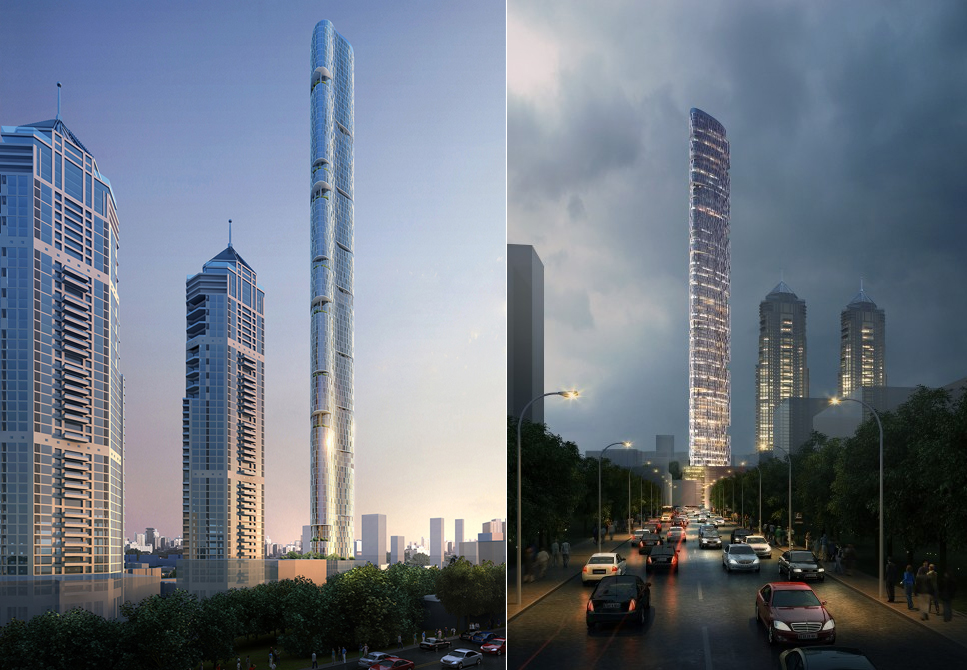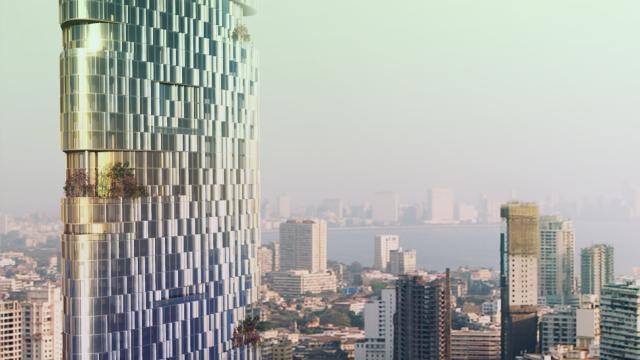Last week, when Smith + Gill Architects unveiled its design for Imperial Tower, which will become Mumbai’s tallest building (by a lot!), their description of the project confounded many critics. “The building,” the architects explained, “is designed to confuse the wind.” Huh? Curious to know exactly what that meant, I got in touch with the Gordon Gill, one half of the Chicago-based office.
There aren’t many skyscrapers in the city, which is part of the reason Smith + Gill’s design shocked so many people. Misgivings about the city’s dramatic divide between rich and poor aside, the 116-story, kidney-shaped supertall will literally tower 1200 feet above the rest of Mumbai when it opens. The glass facade is punched with dozens of cut-outs — sometimes they’re balconies, sometimes they’re gardens, and sometimes they’re functionless.
According to Gill, the cut-out pattern isn’t ornamental — it’s a crucial structural detail that alleviates the negative pressure formed by wind buffeting the tall, thin structure. “What happens is that the wind goes around it on one side, creating a vortex at the opposite end. The same thing happens on the other side, creating negative pressure, and pulling the building from side to side. If the building is smooth, you can end up with a harmonic movement, like a blade of grass in the wind.”
[clear]

[clear]

Instead, the office relies on data from a wind tunnel facility in Waterloo, Canada, to provide feedback on how the wind will react to particular footprint, environment, or façade. They also borrow ideas from auto and aerospace engineering; After all, designing a structure that reaches a half mile into the sky is more like a space shuttle than a building. And just like an early space mission, we won’t know if this design actually works until it’s tested. [Smith + Gill]
